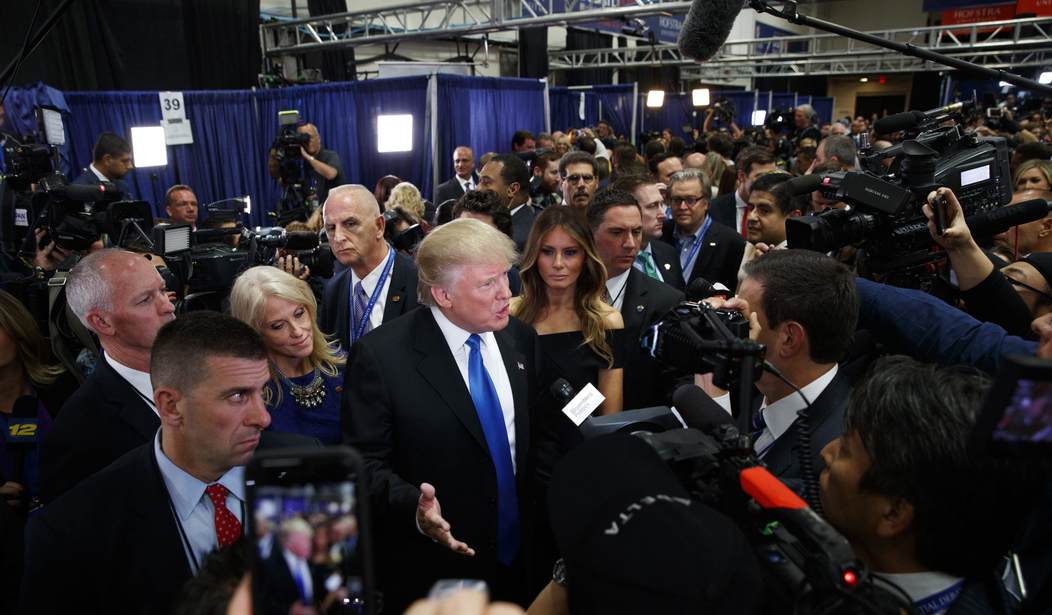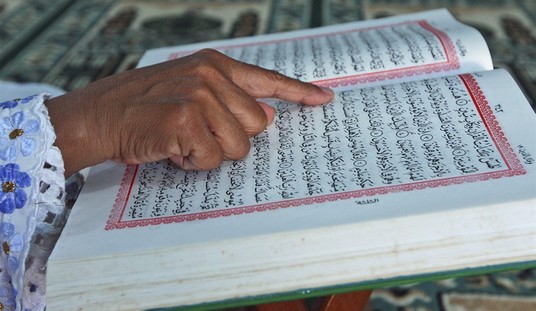WASHINGTON – President-elect Donald J. Trump has built up quite a resume over the years – billionaire businessman, TV reality show personality, and, of course, media critic.
Trump has had something of a love-hate relationship with news organizations over the years, craving their attention when it meets his empire-building needs while dismissing them when they don’t serve – or got in the way of – his commercial well-being.
Now, as a duly elected head of state, Trump finds himself having to constantly deal with a group that former Vice President Spiro Agnew famously referred to as “nattering nabobs of negativism.” And, to be frank, it ain’t going all that well.
News organizations are complaining about lack of access to the president-elect less than two weeks after his surprise victory over Democrat Hillary Clinton. And, in typical Trumpian fashion, he is making his disgruntlement with the newshounds – especially those at the old, gray lady New York Times – widely known.
Several incidents have raised warning flags for the White House press corps, which will be charged with detailing Trump’s comings and goings for at least the next four years. If the president-elect is the least bit empathetic about their concerns, he’s not showing it.
On Nov. 14, on a trip to Washington to meet with President Obama and Republican congressional leaders, Trump rejected pleas to permit a so-called “protective pool” of reporters to accompany him from the Trump Tower in New York City. Two days later, back in Gotham, the pool was assured by campaign spokeswoman Hope Hicks that Trump was retired for the night, permitting the press corps to go on about their personal business.
But as things turned out, Trump and family members left his tower later in the evening for dinner at the 21 Club – without members of the press in tow. Those pool members responsible for keeping an eye on the future leader of the free world were thereafter forced to drop whatever they were doing and try to track him down.
“One week after the election, it is unacceptable for the next president of the United States to travel without a regular pool to record his movements and inform the public about his whereabouts,” said Jeff Mason, president of the White House Correspondents’ Association.
Thus far, during his short tenure as president-elect, Trump has all but ignored the press, other than to take to his Twitter account, with about 15 million followers, to lambaste the Times in a series of tweets after the paper recounted reports of disarray within his transition effort. The Times reported that British Prime Minister Theresa May sought to call and congratulate him on his victory but had to wait 24 hours to get through.
“The failing @nytimes story is so totally wrong on transition,” Trump tweeted. “It is going so smoothly. Also, I have spoken to many foreign leaders.”
He later added: “I have recieved [sic] and taken calls from many foreign leaders despite what the failing @nytimes said. Russia, U.K., China, Saudi Arabia, Japan, Australia, New Zealand, and more. I am always available to them. @nytimes is just upset that they looked like fools in their coverage of me.”
As was the case during his successful campaign, Trump is using Twitter to go over the heads of news organizations to contact the public directly and take the opportunity to impugn the media charged with covering him. News organizations are waiting to see if this behavior continues, although Hicks has offered assurance that the transition is formalizing a press pool structure and will implement it as soon as possible.
The day after the 21 Club incident, another Trump spokesman, Jason Miller, acknowledged to reporters that “last night probably was an example where there could have been a little bit better communication.”
“But I would also say – would also stand up for the president-elect and say that, for some in the media, unless they’re actually sitting at the table, seeing if he’s getting the chicken or the fish, that they will never be happy,” Miller said. “And there always needs to be some kind of balance for respecting some degree of privacy.”
Regardless, Miller said, the transition is determined “to make sure that something like last night doesn’t happen again.”
Mason responded by saying the White House Correspondents’ Association “is pleased to hear reassurances by the Trump transition team that it will respect long-held traditions of press access at the White House and support a pool structure.”
“But the time to act on that promise is now,” he added. “Pool reporters are in place in New York to cover the president-elect as he assembles his new administration. It is critical that they be allowed to do their jobs.”
The WHCA isn’t the only organization expressing worries over the access issue. The Committee to Protect Journalists, an independent, nonprofit organization that advocates for press freedom worldwide, sent a letter to Vice President-elect Mike Pence, head of the transition team, dated Thursday requesting a meeting, asserting it is “concerned about the incoming administration’s commitment to upholding freedom of the press in the United States and around the world.”
“During the presidential campaign and since its conclusion, the climate for journalists has deteriorated sharply,” said Joel Simon, the group’s executive director and the letter’s author. “President-elect Trump has obstructed news organizations, attacked reporters by name and contributed to a threatening climate for journalists covering the election.”
Trump’s actions, Simon said, “set a terrible example for the rest of the world, where governments routinely justify intervention in the media by citing national security, and where vilification of the press by public figures creates a divisive environment ripe for attacks on press freedom.”
Meanwhile, PEN America, organized to protect open expression in the United States and worldwide, said Trump’s handling of the pool “is a warning sign for the future of press freedom.”
Suzanne Nossel, executive director of PEN America, noted that the Trump campaign “has been notorious for seemingly arbitrary and punitive limitations on press access.”
“In the lead-up to the election, Trump banned more than a half dozen significant news outlets from covering him or attending his campaign events as media representatives,” Nossel said. “In the last several months, the President-elect and his family have also threatened to sue several media organizations, including The New York Times and Politico.”
The pool system is the primary structure utilized to make sure the public remains fully aware of the president’s – or, in this case, the president-elect’s – activities on a daily basis. (Full disclosure: this writer was a “poolster” for six years during the administration of former President George W. Bush.)
The pool generally consists of a handful of reporters representing all facets of the media – newspapers, television, radio and other outlets – who serve on a rotating basis. The pool follows the president whenever he leaves the White House, night or day, to avoid what would otherwise be a stampede of dozens and dozens of reporters assigned to cover the president trailing his every move at every moment away from 1600 Pennsylvania Ave. The press pool issues a pool report to the other members of the press corps detailing what occurred during the chief executive’s travels.
Such a system is essential even though most reports turn out to be rather mundane (this writer recalls issuing a report one cold evening after sitting outside a Mexican restaurant for two hours where absolutely nothing transpired). But if something happens – an accident, a confrontation, even an attempt on the president’s life – the pool is there to make sure the event is properly witnessed and the information is forwarded to the public at large.
“In addition to breaking with decades of historical precedent and First Amendment principles, this decision could leave Americans blind about his whereabouts and well-being in the event of a national crisis,” Mason said. “A pool of reporters is in place and ready to cover President-elect Trump. The WHCA urges President-elect Trump to allow it to do its job, including being present for motorcade movements, meetings, and other interactions. Not allowing a pool of journalists to travel with and cover the next president of the United States is unacceptable.”
Trump’s relationship with the press has long been problematic. He consistently bashed the media during campaign rallies, urging his supporters to jeer those scribes in attendance. He often picked on correspondents by name – Katy Tur of NBC News was a frequent target, calling her “Little Katy” and calling on the network to fire her for “dishonest reporting.”
He also banned some news outlets from even attending and consistently used Twitter – which frees him from answering reporters’ questions – to chide his critics and launch often outrageous claims. He has thus far managed to avoid a post-election press conference, although he did sit down for an interview with 60 Minutes.
To be fair, presidents, and more than likely presidents-elect, have had their share of conflicts with the people assigned to cover them. Long gone are the days when President Franklin Delano Roosevelt would invite correspondents into the Oval Office for cocktails and off-the-record gossip.
President Obama has come in for his share of criticism. The Committee to Protect Journalists issued a report in 2013 asserting that reporters struggled to obtain crucial information from sources in the Obama White House amid aggressive prosecution of leakers of classified data. It found that the Department of Justice seized journalists’ phone records and emails and initiated broad electronic surveillance programs.
The report found that the Obama administration “fell fall short of promises to run an open and transparent White House.”
That same year, the National Press Photographers Association objected to restrictions imposed by the White House on access to the president. The administration was becoming more reliant on its in-house photographers to cover an event as opposed to opening it up to those assigned by news organizations.
“Journalists are routinely being denied the right to photograph or videotape the president while he is performing his official duties,” the NPPA said in a letter to then-Press Secretary Jay Carney, joined by several other news organizations. “As surely as if they were placing a hand over a journalist’s camera lens, officials in this administration are blocking the public from having an independent view of important functions of the Executive Branch of government.”









Join the conversation as a VIP Member